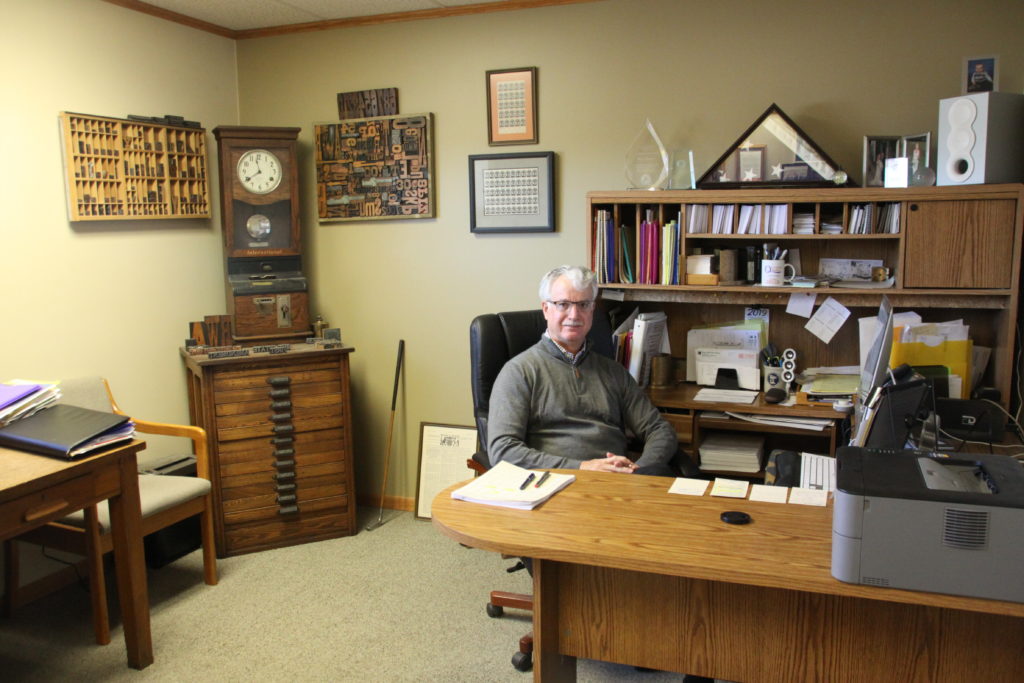Survey: Readers trust community newspapers more than national news outlets, social media
Readers trust their community papers more than any other news outlet, according to a recent survey from the National Newspaper Association.
The survey, conducted annually for the National Newspaper Association by Susquehanna Polling and Research of Harrisburg, Pennsylvania, found that national network TV came in closely behind community papers. Social media ranked the lowest.
Kate Richardson, managing editor for Publisher’s Auxiliary, a publication of the newspaper association, said the survey results reflect that community newspapers still have a crucial place in journalism, although on a trustworthy scale of one to 10, both community papers and network TV were roughly in the middle.
“Community newspapers are still the most trusted source of information because the reporters and editors are also residents in the communities that they cover,” Richardson said. “The residents of these communities know these reporters and can see them serving as their watchdogs on a daily basis.”
The survey also found that most community newspaper readers exercise their right to vote, with 85% of readers saying they are “very likely” to vote in upcoming elections, compared to 73% of non-newspaper readers. Community newspapers were also rated the most trustworthy as a source of information on political candidates running for office.
“Journalism is not rocket science, but you have to do it right,” said Matt Paxton, publisher of The News-Gazette in Lexington, Virginia. “We feel a sense of responsibility to get the story right and present it in a fair and balanced way. We encourage people to get involved and to respond. The reader knows when you are being authentic or not.”
When it comes to explicitly seeking out information on candidates running for public office from the federal to the local level, 68% of respondents turn to national network TV news “very or somewhat often,” then followed by community newspapers at 61%, and then cable TV news at 58%. Only 42% of respondents seek out direct mailing or newsletters from candidates/political parties, 38% get their information from radio, 33% from metropolitan newspapers, and the lowest being social media, with 29% of respondents receiving their news from there.
Readers and non-readers agree that it is essential for the public to have access to their local government with an average rating of 8.23, on a scale of 1 to 10, for readers and 7.88 for non-readers.
“We give the readers the information they need to make an informed decision, which means they are then more likely to vote,” said Matt Adelman, publisher of the Douglas Budget in Douglas, Wyoming. “If larger publications want to gain the public’s trust, they can no longer be everything to everybody. They need to take a step back and decide what their core mission is and let everything else go. It’s pointless to try and please everyone.”
Of the respondents, 79% agreed that community newspapers “provide valuable local shopping and advertising information.” A quarter rated their community newspaper as their primary source of information regarding local stores, which is higher than all other outlets, with social media being the closest behind at 17%.
“Community newspapers have a proven history of trustworthiness when it comes to this kind of information,” Adelman said. “Everything we do, from stories to advertising, is hyper-local. People know us and trust us because they grew up with us.”
Reed Anfinson, the publisher of the Swift County Monitor-News, in Benson, Minnesota, said it is essential for the future of community newspapers to find a sustainable revenue model and take the feedback of their readers to heart.

“Publications need to seriously take the opinions of their readers into account and do so in a public way,” Anfinson said. “It takes a different level of engagement to read a paper then to turn on a program or skim a headline from your social media feed. That’s why it’s so important to find a revenue model that will sustain our newsrooms and encourage people to continue to want to pick up their community paper.”
One solution to sustain community newspapers is the pay-per-article method, where readers can pay a minuscule fee to have access to their community newspaper stories online. But readers overwhelmingly reject that, with 89 percent saying they would not be willing to pay even 50 cents per article.
Perhaps because many get the content for free, the dliemma for publishers, readership levels are holding steady, with 64% of respondents saying they continue to read their community newspaper in print, online, or both.
“You can often know more about what is happening in the world, then your own backyard,” Anfinson said. “That’s why community newspapers are so important.”
The official survey results can be downloaded from nna.org.
Nick Forsythe is a correspondent for GJR based in Chicago, where he studies film and journalism at Columbia College Chicago. Follow him on Twitter @njfproductions.


